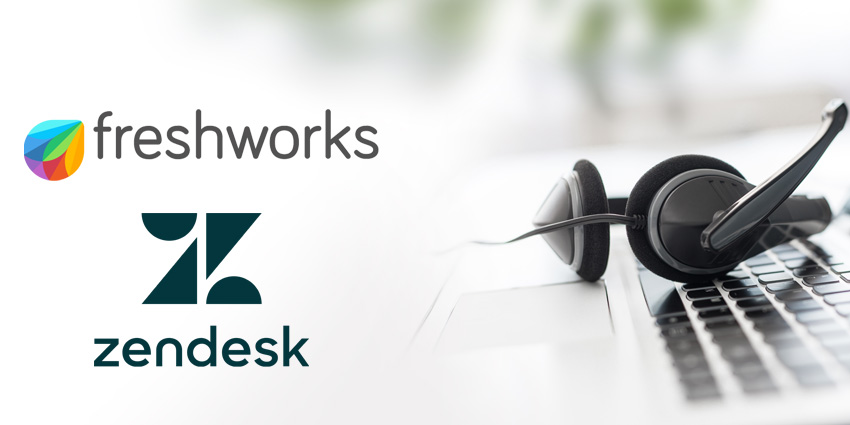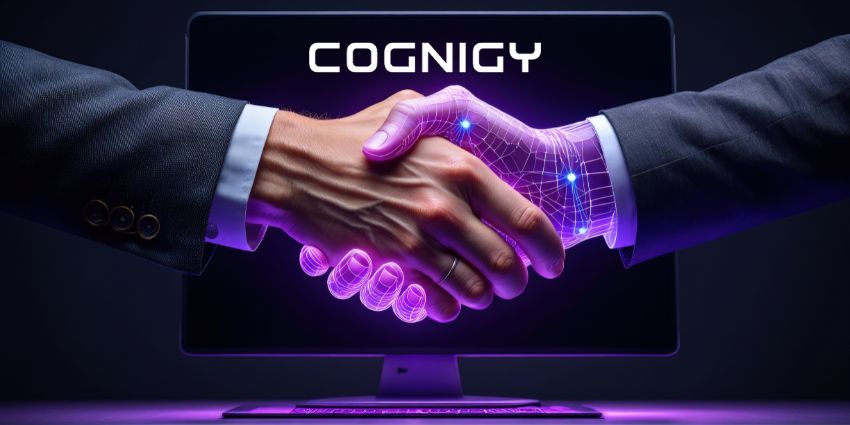Whether responding to employee or customer questions, a helpdesk is a vital tool in a business’ arsenal. Increasingly we’ve seen artificial intelligence technologies such as natural language understanding come to the fore in the industry, offering conversational assistance before handing off to human workers for the most complex tasks.
In today’s fireside chat, we welcome Simon Johnson, General Manager, UK and Ireland, Freshworks and Celine Maher, VP UK&I at Zendesk, to discuss such trends and the future direction of helpdesk technology.
How has the development of AI and omni-channel contact centres impacted the growth in the helpdesk over the last year?

Johnson: “The last year brought a big change in how companies approached customer service. Before the pandemic, many contact centres were still reliant on legacy systems which did not allow for much automation, requiring workers to manually respond to requests and pass conversations between colleagues. This changed as companies were forced into remote or hybrid environments, prompting helpdesks to take full advantage of technology.
“AI is now a key part of the best helpdesk experiences. It allows human agents to automate repetitive tasks and focus on higher-value tasks. The advent of remote working also meant that customer service teams had to adapt to be contactable through multiple channels. AI allowed omni-channel contact centres to pick up a conversation that was started on Twitter and continue it over email or via a chatbot.
“The increased adoption and recognition of AI and omni-channel contact centres has enhanced the broader value of business helpdesks. Allowing workers to focus on higher value or urgent tasks means helpdesks can more often provide the seamless customer experience they are intended to and increased their value exponentially.”
Maher: “Technological advancements in AI and the rise of omni-channel contact centres has helped businesses address growing demand in the number and type of requests from customers, as well as provide quality customer experiences that drive loyalty. According to Zendesk’s Customer Experience (CX) Trends Report 2021, the number of average weekly support requests has risen by 20% since the beginning of the pandemic, with businesses looking to technology to help manage the influx of requests.
“An omni-channel customer engagement platform in particular, can enable helpdesk teams to prioritise, monitor, manage, and respond to ticket requests in the most efficient way regardless of where the conversation started. Combined with AI-powered technologies, an integrated helpdesk and knowledge base can empower customers to solve straightforward issues themselves, which is often the quickest and most convenient response. In turn, this frees up agent time so they can focus on providing more strategic support to customers, addressing complex issues and offering guidance. This shift has grown and reshaped the scope of the helpdesk within organisations, showcasing its pivotal role as more than a cost centre, but a potential revenue driver. As a result, firms are investing further in their CX, recognising its crucial role in business success.
What are the major challenges/ hurdles for businesses wanting to adopt helpdesk technology?
Johnson: “Whenever an organisation decides to implement a helpdesk solution, its immediate focus should be to align this process with their long-term strategic goals. During the implementation phase, however, there are often challenges that distract them from this. Sometimes, the implementation of new software can bring out a company’s deficiencies or reveal previously unidentified process gaps.
“One of the main challenges for implementing helpdesk software is a mismatch in expectations between the organisation and the software provider. Companies must understand how to balance the cost and time of implementation with quality. As part of this, the potential system features should be clearly identified and communicated to its users. It is also crucial that the business and software provider agree on the reporting tools to effectively assess the performance and metrics of the integration.
“In addition, companies can receive push back from the end users of the system who are unconvinced by the need for change. This tension can be eased by involving the employees in the process analysis and taking their advice through the planning and implementation phases, rather than dictating the pace without any consultation.”
Maher: “Businesses wanting to adopt helpdesk technology have faced a changing landscape. In the last year alone, companies have needed to shift entire lines of business online, equip agents to address pandemic-induced customer concerns and rolled out new technology to provide CX teams with the right tools to work from home.

“Against that backdrop of rapid change, agility has become the new top customer experience priority for 61% of agents and 56% of managers, globally, according to Zendesk’s Agility in Action research. And, while customers showed patience when the pandemic hit, now more than a year on, Covid can no longer be an excuse for poor service.
“Success now hinges on a business’ ability to be responsive in the face of surging customer expectations. As customers’ needs become more complex, loyalty is razor thin: Our research found that 44% of UK consumers will leave a brand after just one bad experience. Businesses need to be agile and deliver timely, intuitive and empathetic experiences, or risk alienating valued customers. Creating a strategy to do so, securing investment, and identifying the right tools to support are major challenges for companies as they look to the help of helpdesk technology.”
Is there scope for helpdesks to empower teams to build strategic approaches to problem management, SLA control and service in the way service desks do currently?
Johnson: “helpdesks must employ strategic approaches across all their functions – whether that’s service desks, problem management or SLA control.
“Take SLA control as an example. Like with IT service desks, customer concerns must be categorised by priority. While every customer concern is important, not all of them are equally urgent. By categorising common support problems by priority and setting separate SLAs for each type of question, helpdesk teams can better prioritise customer needs.
“For instance, an outage SLA time might be a lot shorter than a request to update a billing address. Using multiple SLA policies allows helpdesks to get as granular as is strategically necessary to serve each type of customer uniquely.
“Ultimately, agents have a lot to think about when supporting customers. Which ticket they work on shouldn’t be their biggest decision. This is where the helpdesk comes in: they can strategically track, prioritise, automate and report on problem management or SLAs. This means tickets are automatically routed to the best person and can be prioritised by urgency of the issue.
Maher: “If approached strategically, helpdesks are a fountain of knowledge from which businesses can solve problems, create efficiencies and drive growth. A customer engagement platform can help you be proactive about collecting information and sharing it with different departments in your organisation.
“The problem is, the insights are too often siloed within CX teams who aren’t always consulted for the vast knowledge they have, meaning these critical learnings remain overlooked. According to data from Zendesk’s Agility in Action research, ‘agile’ leaders are 4.7x more likely to report customer metrics in real time, making it easier to use CX analytics to recognise and respond to these shifts. But unfortunately, few business leaders (9%) or managers and administrators (11%) globally have the minimum set of agility competencies required to be considered “market leading”, meaning many businesses lack visibility of key issues and opportunities.
“That needs to change, fast. Customer insight isn’t just about solving problems. It can help leadership better define a proposition’s USPs, understand market needs and make decisions about how to innovate based on demand. Although it isn’t always recognised this way, the helpdesk can be the source of the most powerful intelligence at a company’s disposal.”







